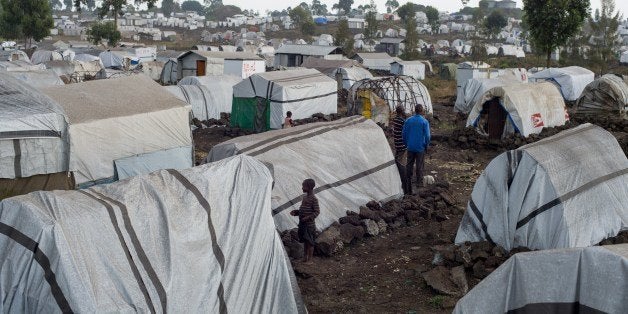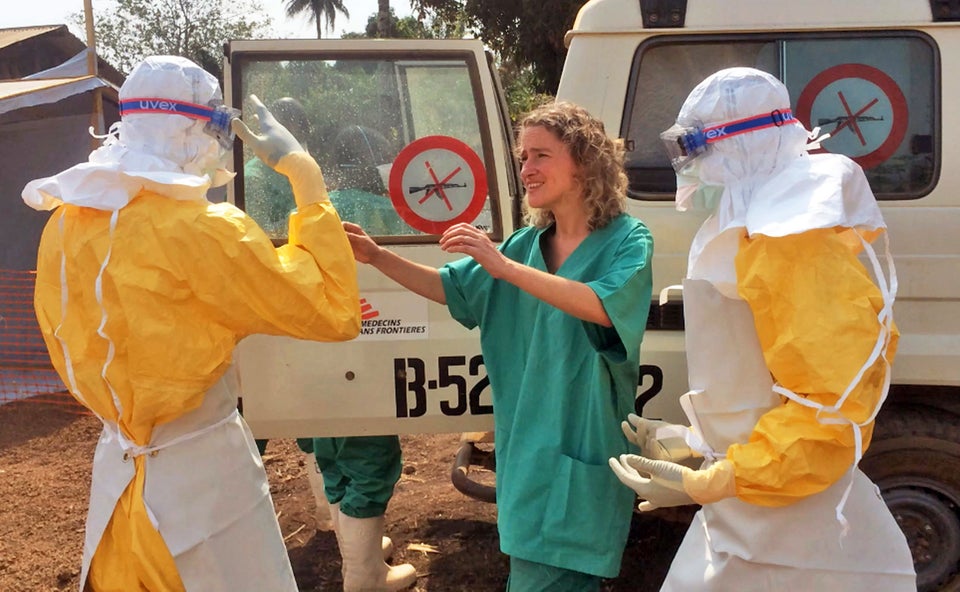
By Allyn Gaestel for OZY
Can the global health system stop Ebola? The answer has more to do with Samuel Kazirharo than you might expect.
Kaziraho is a war-weary 44-year-old who lives in the Bulengo displaced-persons camp, in the eastern Democratic Republic of Congo. This summer he was struck by malaria, like many men in Bulengo. Fevers and chills stole 10 pounds from his frame and a month's income from his pocket. Responding to a rash of cases, Doctors Without Borders rushed to test and treat patients. But it couldn't give Kaziraho a bed net to replace his shredded one: Its nets were earmarked for pregnant women, and getting other organizations to step in was achingly slow.
"The first battle is, they have to agree on the problem. Then they have to find and convince the donor," said Axelle Alibert, a Doctors Without Borders coordinator in Goma. "It will be three months, then by the time they organize it they might not need it anymore."
The shortcomings of humanitarian aid are no secret to experts, and now the Ebola crisis has thrust some of them into the spotlight. Nine months after the first Ebola case emerged deep in the forests of Guinea, the global humanitarian machine has finally rumbled into action with money, promises and troops.
But the health system's problems reach further than the 6,263 who've contracted Ebola. Malaria killed an estimated 627,000 people in 2012. Tuberculosis and cholera affect millions more. For those who advocate changes in the global health and emergency response system, Ebola could be a catalyst.
That is, if they can look past the consuming crisis.
That's a big if. But a few ideas appear to be taking shape. More aggressive intervention by international agencies like the World Health Organization (WHO). Devolution of resources and control to entities on the ground. And, over the long term, beefing up local health architecture, from medical schools to hospitals.
With a record $22 billion spent on humanitarian aid in 2013, money is not the entire issue. "It's not that there's a lack of resources, but it's that the resources aren't keeping up with the need," said Breanna Ridsdel, spokeswoman for the World Humanitarian Summit, slated for 2016. Like others, participants in the summit are shaping new paths for emergency health response, like smoothing clunky bureaucracy and empowering local authorities.
One way forward: Get rid of the earmarks. Doctors Without Borders garnered praise for its nimble response to Ebola and willingness to work amid an epidemic that terrified public hospitals and other nongovernmental organizations into closing their doors. The organization is nimble because it has authority to spend money how it deems best. Notwithstanding the bed net Kaziharo couldn't have, the agency has fewer earmarks than other organizations, which typically depend on donors with specific priorities. When a crisis hits, they're cash-strapped.
"We have our own funding, from the public, which allows us a flexible and responsive approach," Sandrine Tiller, Doctors Without Borders program adviser on humanitarian issues and an author of a recent biting report on the broken emergency response system, wrote in an email.
The WHO was comparably lethargic, partly because of financial-crisis budget cuts, and partly because it reserves only a small portion of its $4 billion budget for crises and emergencies, about $114 million.
Emergency funds are supposed to avoid earmarks and compartmentalization, and to provide a ready pool of money for pandemics or emergencies. But getting donors to commit to hypothetical emergencies is a tough sell. "It's hard to give open-ended checks," said Vicky Hausman, an expert at Dalberg Global Development Advisors, a development consultancy. "It comes back to, how do you sell that to constituents in Iowa?"
There is a Central Emergency Response Fund, run by the U.N. Office for the Coordination of Humanitarian Affairs, but it is tiny. It spent $482 million in 2013. It's disbursed an anemic $7.58 million for Ebola since April, but CERF isn't supposed to be the full humanitarian response, it's supposed to be quick.
The tighter bottleneck: CERF doesn't flow to local authorities, but to U.N. agencies. Countries that receive donor resources generally can't decide how to use them. The complaint pops up repeatedly among local governments and global humanitarians alike.
Partners In Health is among a handful of prominent NGOs that invest in local health structures, instead of supplanting them. It usually doesn't do emergency response, but it's making an exception for Ebola. With co-founder Paul Farmer also serving as a special Ebola adviser to the World Bank, its philosophy may have broader reach.
To be sure, depending on local authorities to stop crises doesn't work everywhere. Sierra Leone, for example, was in shambles after its civil war ended a decade ago, and by 2010, the country had just two doctors per 100,000 people. But in Nigeria and Senegal, where health care systems are more robust, local authorities clamped down right away, with the support of the international community. They seem to have stopped it in its tracks.
"This is why we need to invest in local health systems," said Hausman. The argument, she added, "has struggled to gain traction."
Allyn Gaestel and Allison Shelley reported from Democratic Republic of the Congo with support from the International Women's Media Foundation.
